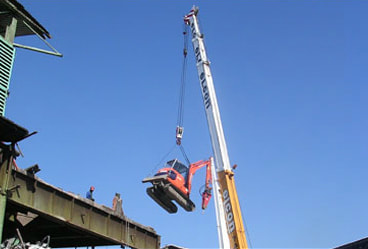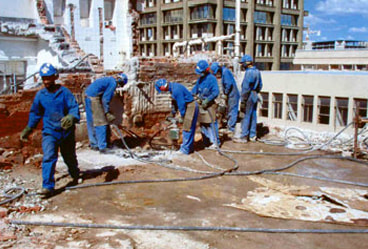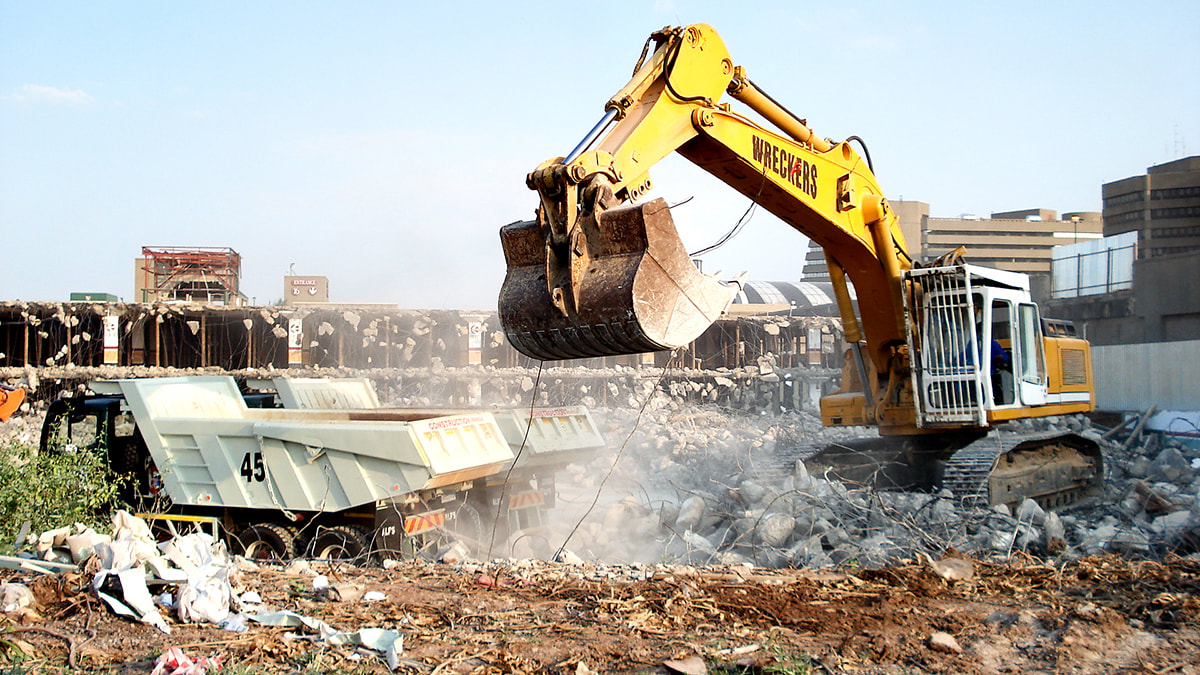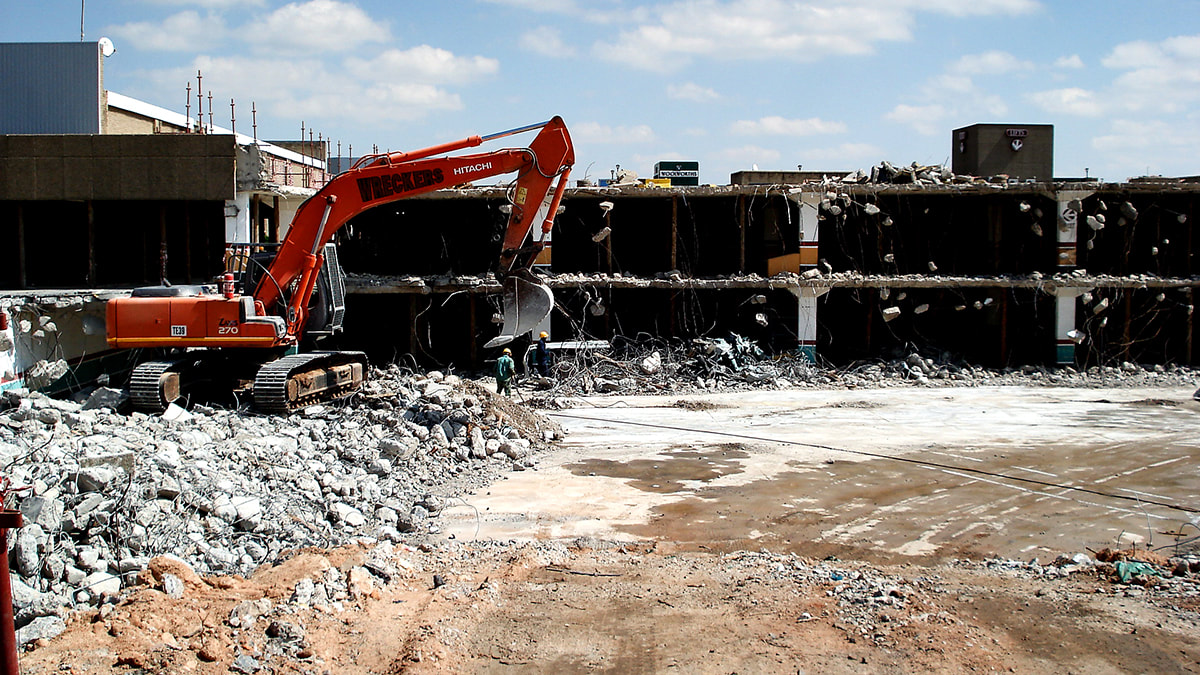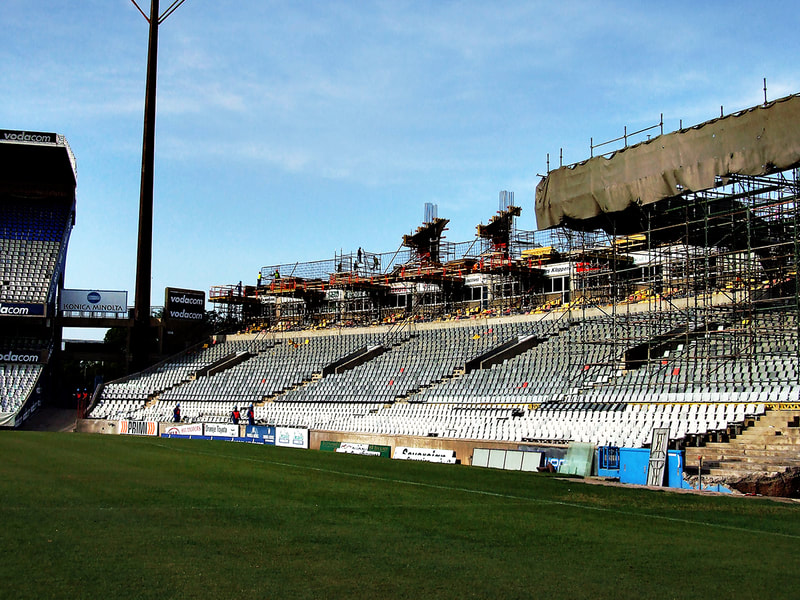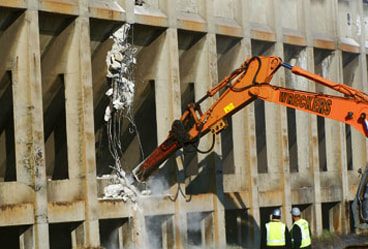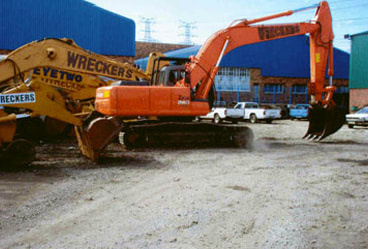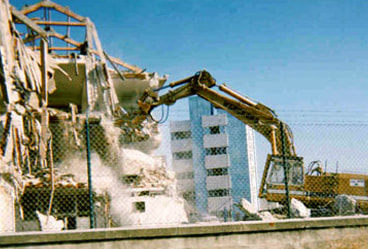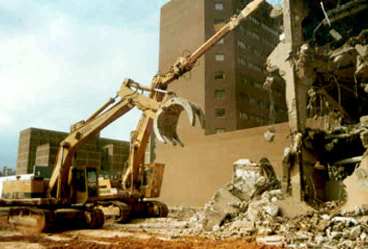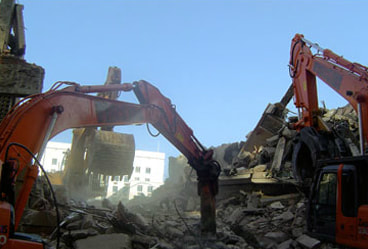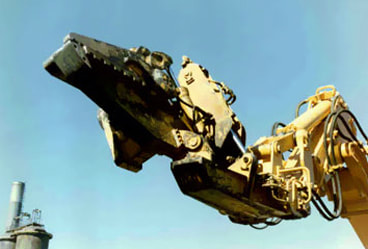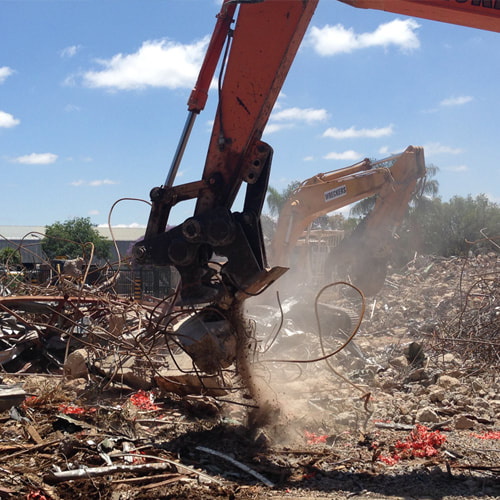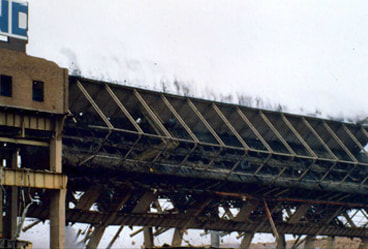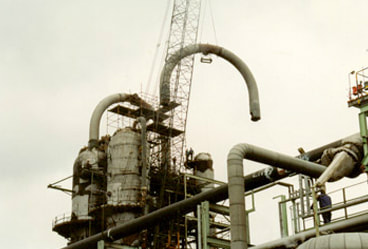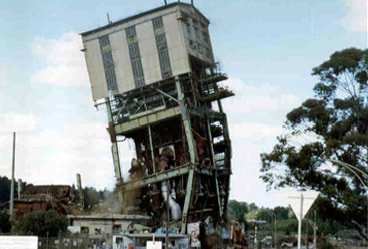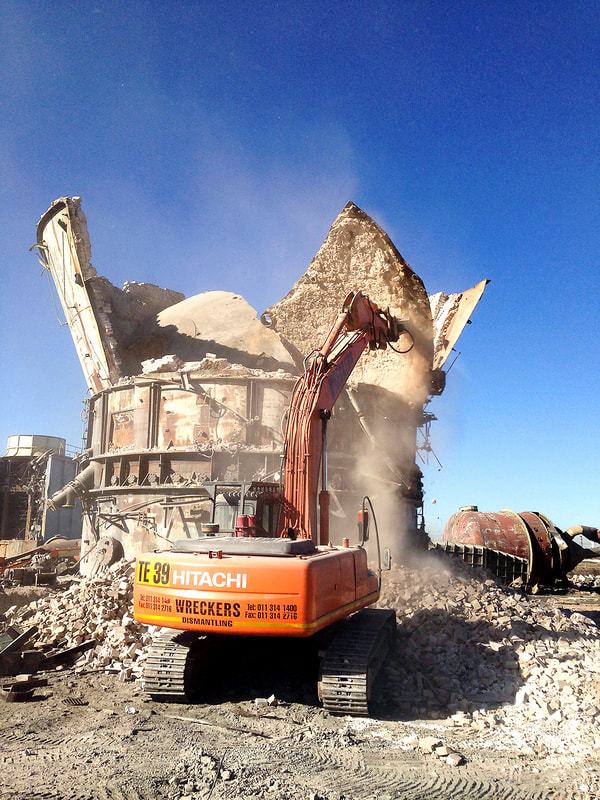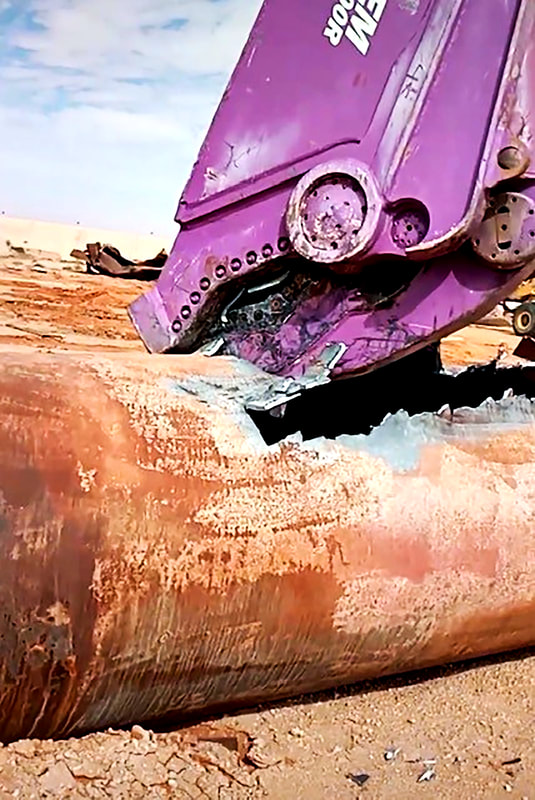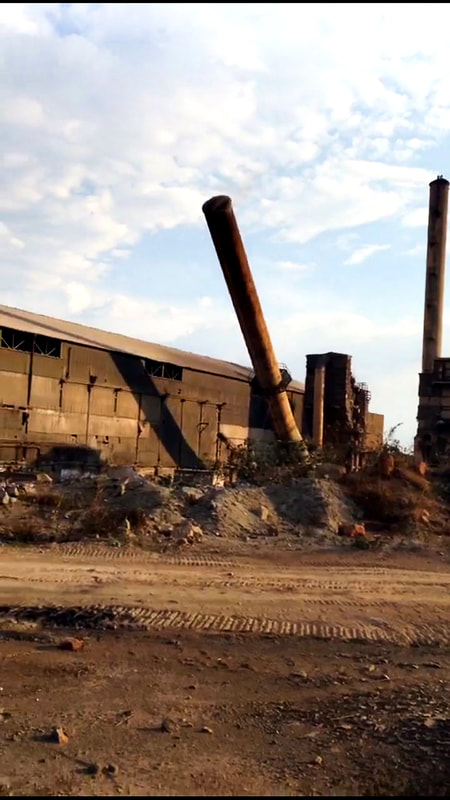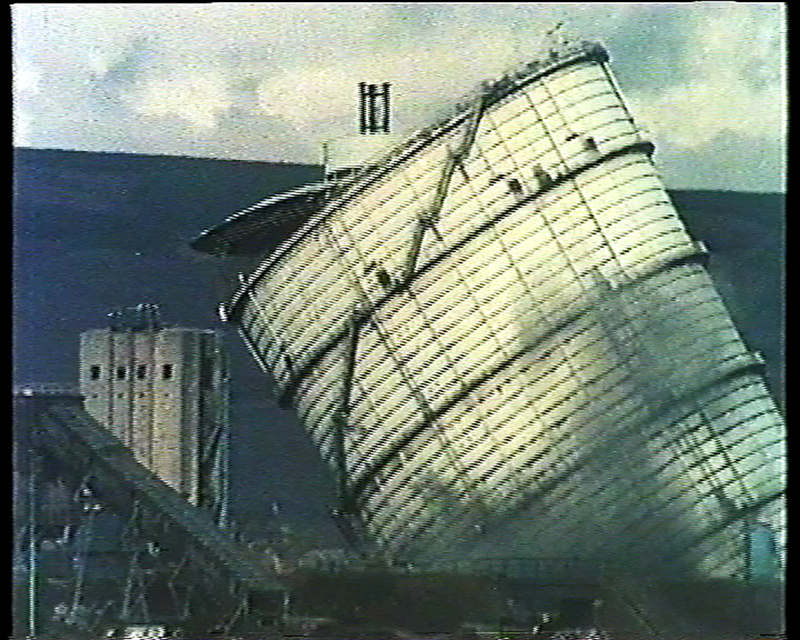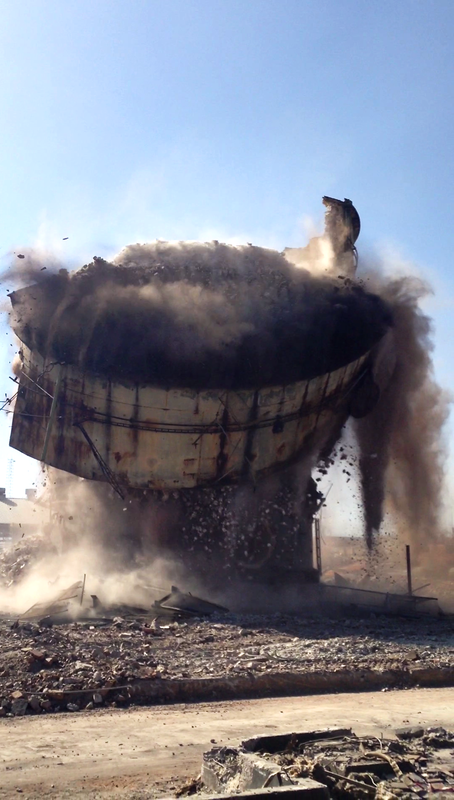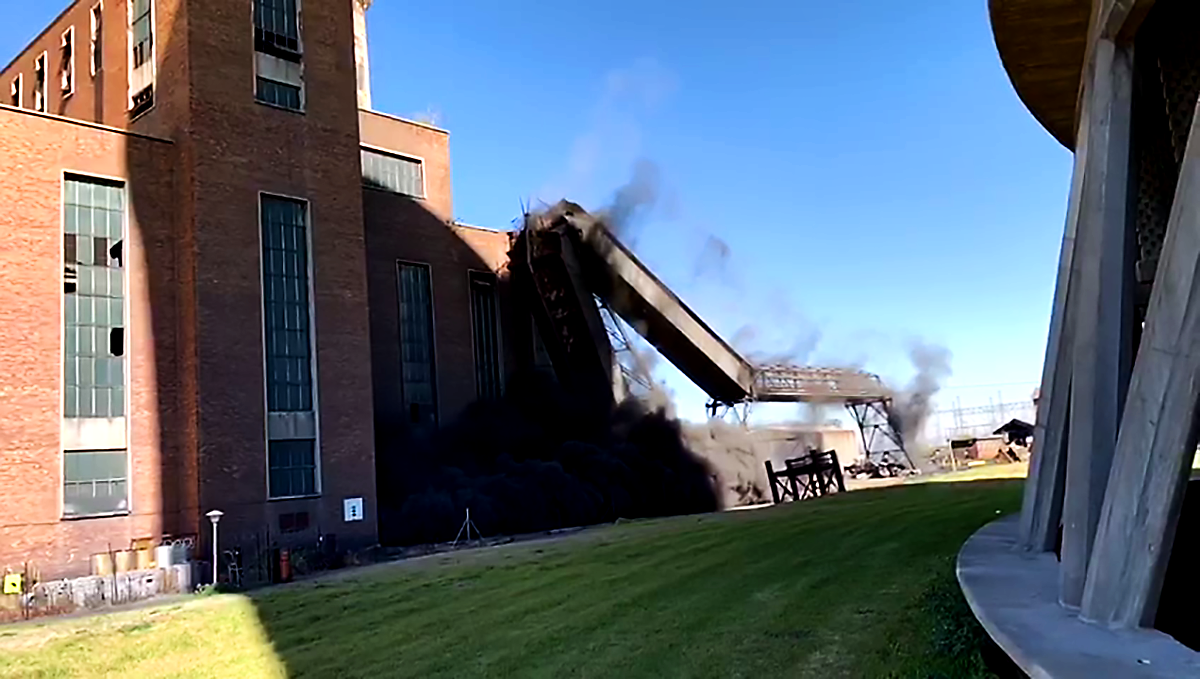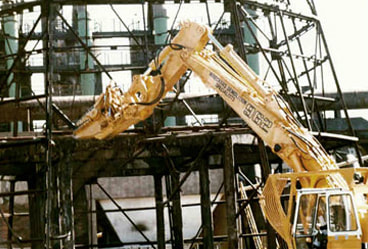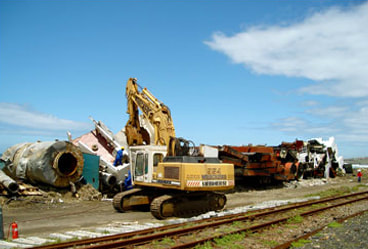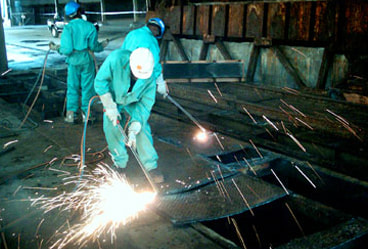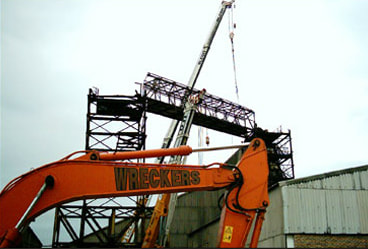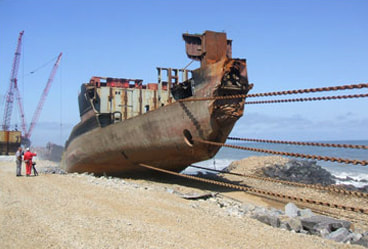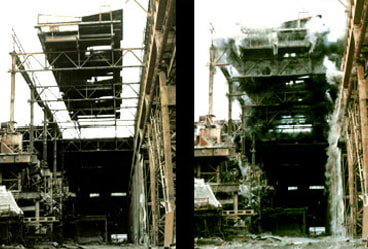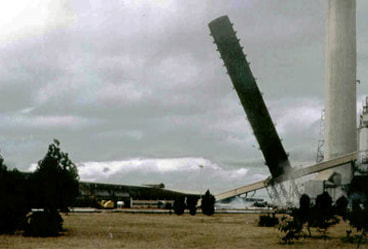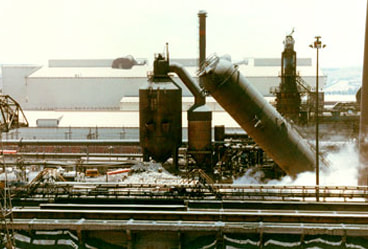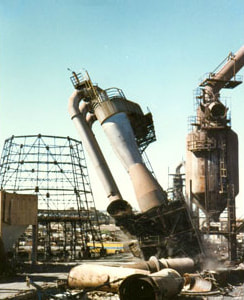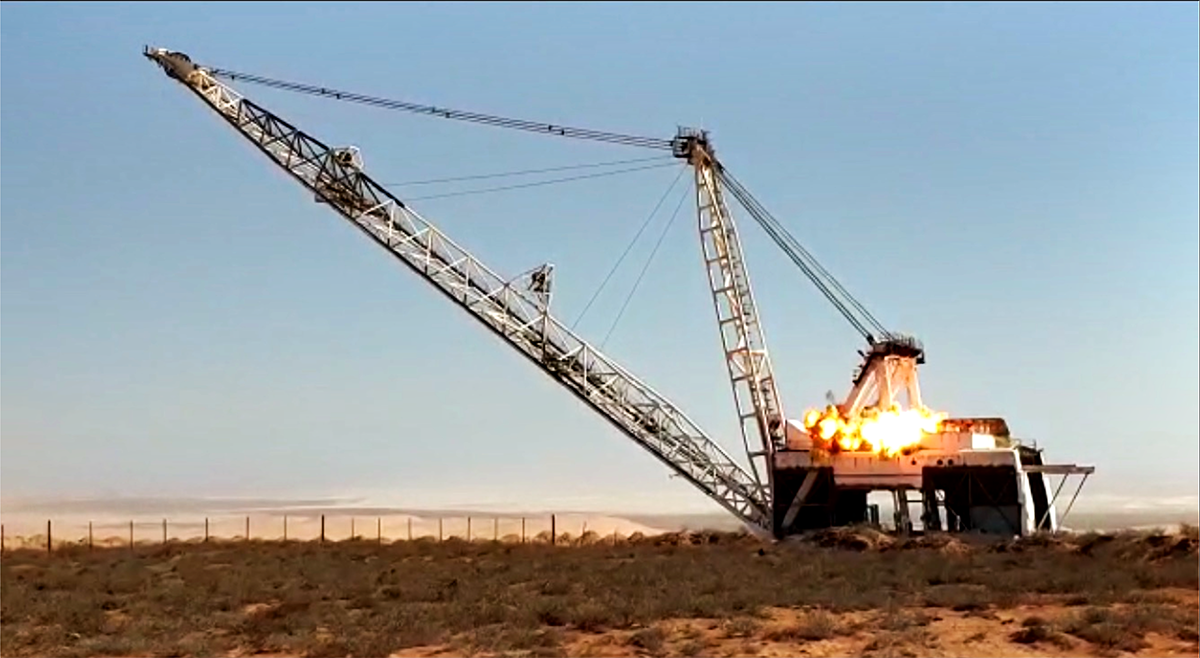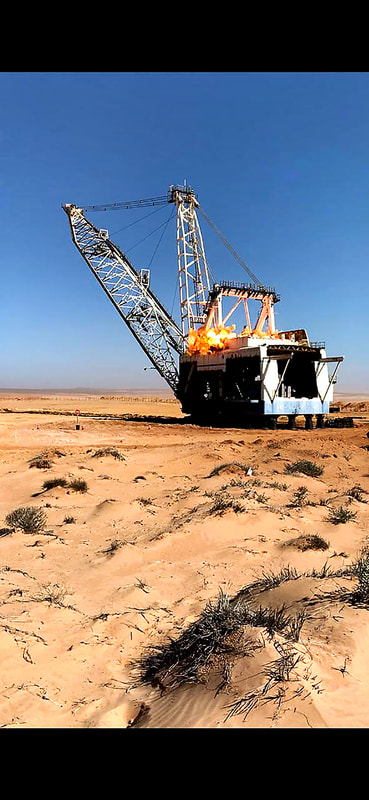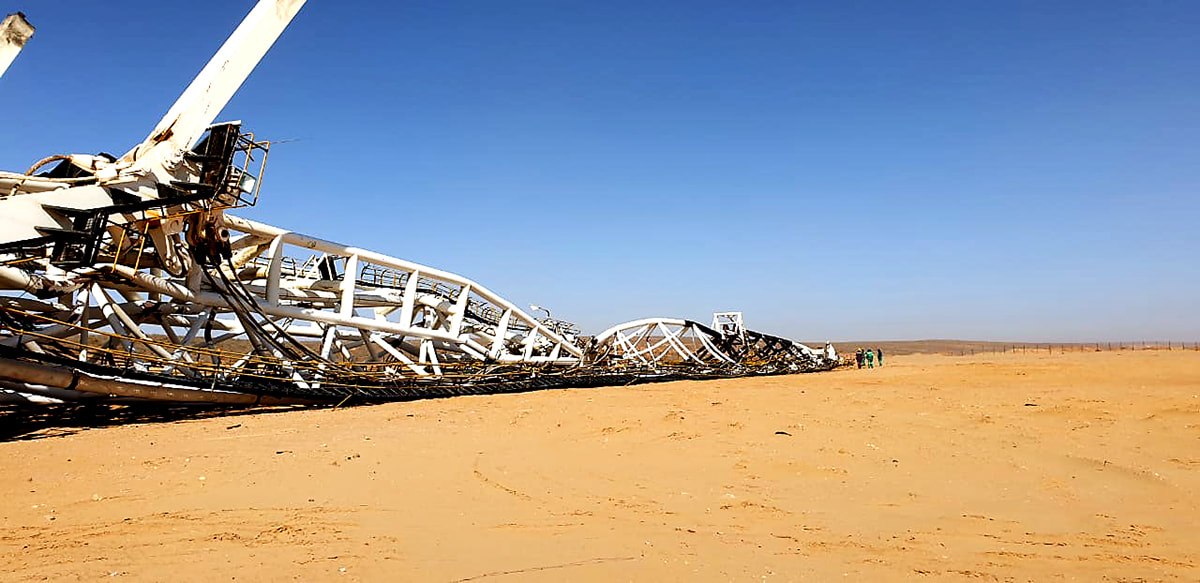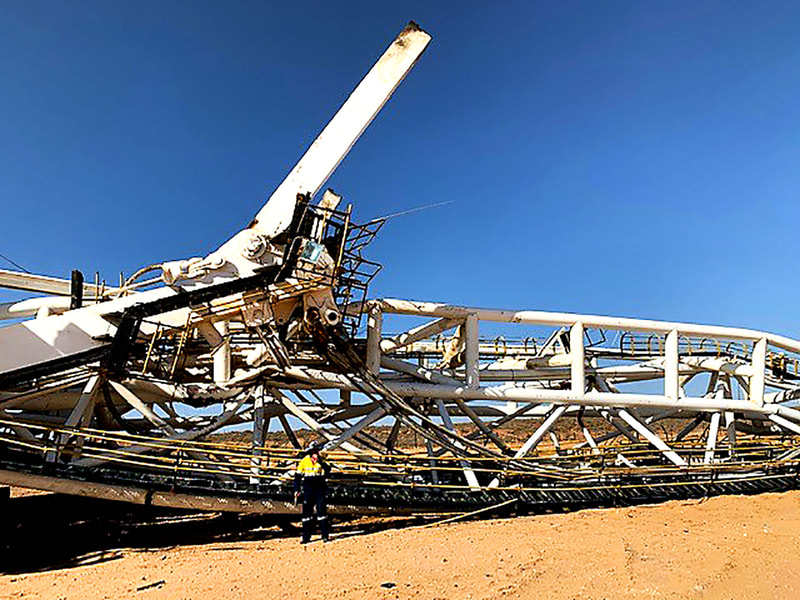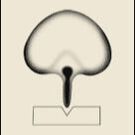Conventional Demolition Key BenefitsAdvantages: Proven technology, low environmental impact.
Equipment: Small machinery, manual labour. Cost Saving: Applicable to small projects. Safety: Ensured by skilled operatives. |
Conventional demolition is that which has a large labour content, and uses small machinery. This is still applicable in the present for several reasons. A small contract often cannot efficiently use machines. Access to some sites can be too restricted for deployment of large equipment.
There are also instances such as removing a ‘slot’ between a larger demolition area and a structure to remain where this technique is employed. In cases where the top of a large building is to be removed while keeping some lower storeys, conventional again applies. Conventional demolition includes the use of compressors, jackhammers and small loading machines, but the main element is the employment of skilled and experienced labour. Economy speed and above all safety rely on this |
Mechanical DemolitionAdvantages: Safety of Workforce.
Equipment: Largest demolition machines in S.A. Cost Saving: Speed. Safety: Minimal hand labour |
As the name implies, this uses machinery, the size of which depends on the job in hand. Excavators, originally designed for quarrying or earthworks are adapted for use in demolition and fitted with specialised tools. There is a wide range of tools to choose from which includes crushing jaws and nibblers for concrete, shears for steelwork and hydraulic hammers for breaking up almost anything. Grapples are used for handling all types of material.
The advantages of the machinery are not only the speed and precision achieved but also the safety that is given by keeping hand labour away from the area being worked on. Within our fleet we have excavators ranging from 3.5 tonne weight to 70 tonnes. All of these will take a variety of demolition tools as well as having their digging buckets available. Changing the tools is easily done on site, adding to the machine's versatility |
Industrial Demolition Key BenefitsAdvantages: Experience and wide range of skills.
Equipment: Explosives and all techniques available in house. Cost Saving: Speed and efficiency. Safety: Experience and ability. |
This applies to areas such as steelworks, power stations and the like. Here, all the various types of demolition are used as appropriate on different parts of a large site.
However, special care must be taken in respect of hazardous materials from the previous use and some specialised techniques are applied. Pre-cutting of the steelwork for collapsing or felling is a highly skilled and specialised technique, used in conjunction with machine pulling or removal of support by explosives. In the cases of power stations and some industries, chimneys and venturi cooling towers are involved. These are normally felled by controlled explosives, and each are subject to different specialised techniques. |
Steel Work Demolition Key BenefitsAdvantages: Specialist techniques. Equipment: Specialised Demolition attachments and use of explosives. Cost Saving: Short programmes. Safety: Most work from a distance The demolition of large steel structures is virtually a separate discipline within general demolition. The transfer and distribution of loads is different to that encountered in reinforced concrete or brick structures. |
Steel is generally approached on the basis of first getting it down to ground level, and then processing it to a size suitable for resale. With the weights and heights involved there is obviously a potential for danger. This is overcome by the use of skilled labour and experienced management. It is essential that there is a knowledge of how structures actually react during demolition. Original design has various factors of safety built in whereas these are not relevant for bringing the structure down.
The key to success is detailed preparation by pre-cutting. This allows for later removal of supporting elements, but without disturbing the stability of the structure. The main demolition is then brought about by the supports being taken out either by a machine pulling or by explosive driving charges. This is done from a safe distance, with no risk to the workforce |
Shape Charges Key BenefitsAdvantages: For major Steel Work demolition. Equipment: Specialised explosives. Cost Saving: Quick and Clean. Safety: Work conducted on intact structure. The principle of high energy cutting devices, or shaped charges as they are commonly known, has become an increasingly important demolition tool. As early as 1880 scientists noted that if an explosive charge was hollowed, the hollow was mirrored in the target after initiation of the charge. |
Over the years the hollow has been modified to take on specific shapes such as wedges and cones. By inserting a thin layer of material – usually a metal like mild steel, lead, copper, silver or sometimes even gold – to line the hollow, the jet formed by the explosive becomes a thin stream of the liner material.
As the detonation wave sweeps over the liner it collapses, forming the jet and slug (see diagram 3 below) which will cut through the structure on which the charge is placed. The most advanced forms of shaped charges are used in space programmes in applications such as rocket separation. These charges, however, have a velocity of detonation of 9 500 metres a second, much higher than the 7 500 metres a second common to the more general applications. Shaped charges have been widely used within the demolition industry, enabling steel framed structures to be demolished in much the same way as reinforced concrete structures. The principle of shaped charges has made it possible to demolish, with maximum safety and precision, complex structures which would have been dangerous to demolish by other means. |
|
SHAPED CHARGE |
The Sequence of Development of a Linear Shaped Charge:
|
Cross-section of charge prior to detonation, showing metallic sheath and explosive core change
|
Immediately after detonation, before sheath vaporizes
|
The sheath has vaporized, and the cutting jet of vaporized metal begins to take shape and form a slug
|
The jet slug is half formed. At this stage some cutting would occur, but it would be very inefficient
|
The jet slug is fully formed and is at the optimum time for cutting
|


